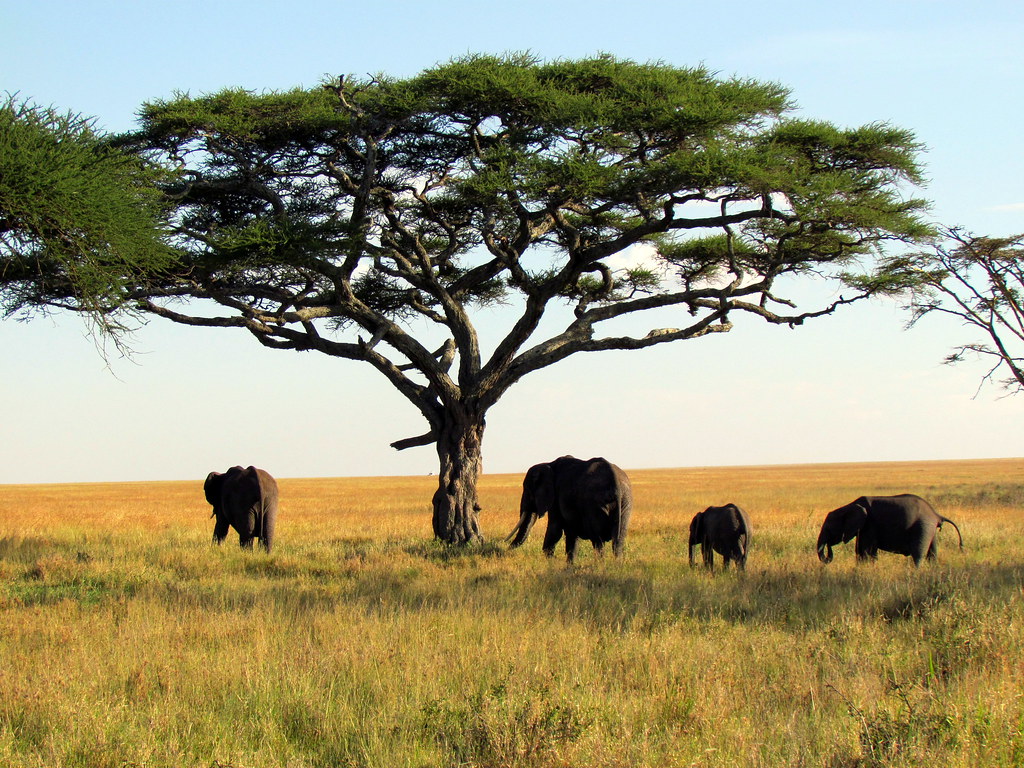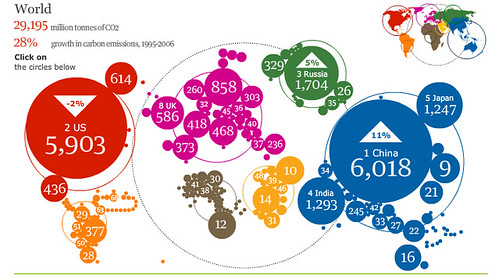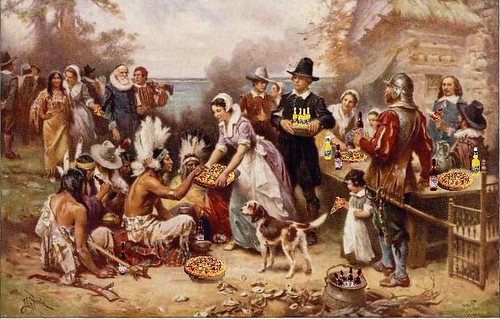Chickens in Tanzania, rabid dogs in Indonesia, and road-killed pigs in Samoa: Exploring ethnographies of environmental knowledge in indigenous, local, and traditional cultures, to assess agreement between actions, perceptions, and values
Kirk Saylor ·Readings and discussion for this week, led by Assistant Professor of Anthropology Jen Shaffer at the University of Maryland, built on discussions of cultural models last week with Professor Michael Paolisso by exploring various knowledge systems, norms, values, and worldviews. Shaffer's research has focused on land-use, knowledge co-production, and cognitive climate models in East Africa (e.g., Mozambique1,2 and Tanzania3) and is in the process of widening to encompass other geographies, e.g. Pacific Islands and the United States. She seeks to understand human-environment interactions, perceptions, and frameworks to improve conservation management. Joining in this discussion were course faculty - Drs. William (Bill) Dennison, Kenneth (Kenny) Rose, and Elizabeth (Liz) van Dolah - as well as the students.

In her slide presentation, Shaffer began by introducing the concept of biocultural diversity,4 in which human language diversity seems to be directly correlated with levels of biodiversity (i.e., species richness, e.g. of higher taxa such as avian fauna). Since ~ 1970 CE, both the number of human languages and biodiversity has declined considerably. Both biodiversity and cultural heritage decline with the extirpation and/or extinction of endemic species.
Shaffer defines anthropology as a discipline involving the application of mixed methods in situ - principally, long-term participant observation, and the collection of qualitative data. Participant observation typically involves "long-term stay" with communities based in places well outside an anthropologist's native land, and it can also involve hands-on involvement / direct participation in household and field-based activities. Qualitative methods, such as interviews and surveys, complement participant observation by eliciting information from the local population. These data can be used to assess the relative agreement between what people are saying, on one hand, and doing, on the other, through a process of "triangulation".
The anthropological subfield of Ethnoecology is concerned with "folk knowledge". Due to pervasive modernization across the developed world, much of this knowledge is being or has been lost over time, although remnants remain (e.g., in the Western vernacular: "red skies" as a proxy for predicting the weather, "robins" as a harbinger of spring, etc.). Across developing regions of the world, local/indigenous populations actively maintain such knowledge systems, which they rely upon for their survival. Early ethnoecological work by westerners focused primarily on plants and was motivated by prospecting for species of commercial value (e.g. agricultural or medicinal). The Western age of exploration exemplified such an effort to identify, catalog, and cultivate species of perceived value. Shaffer mentioned early expeditions involving large fleets from China may have operated similarly. Out of concern for actual losses and potential threats of further loss, arboretums - such as those across Great Britain (e.g. the Royal Botanic Gardens at Kew ) serve as repositories of specimens and associated knowledge.

The anthropological subfield of linguistics has also contributed to the study of ethnoecology. Early work done by Conklin in the Philippines was built on by Berlin and Kay regarding the cultural perception of the environment.5 Differentiating "light" from "dark" (e.g. culturally encoded as white vs. black) seems a foundation of color perception. Red constitutes a secondary level. Other colors (e.g., blue, green, yellow, orange) occur at tertiary or higher levels. In this vein, Dennison commented on the universality of red for signifying fire/danger, with physiologic effects on humans (i.e., as contrasted with the calming effects of green). Culture as a shared system of knowledge depends on the use of language as a medium between culture bearers.

With regard to naming systems, common objects generally have specific names more often than objects that are encountered less frequently. Such names may differ on the basis of gender (i.e., referred to differently by men and women). Cecil Brown articulated a theory of universal life-form categories, e.g. tree, bird, snake, in 1984.6 Berlin assessed that nomenclatures were non-arbitrary and often having a basis on either distinguishing features or vocalizations.7
Ethnoecology is concerned with "big questions" important to human survival. It seeks to understand what people need to know in order to survive and succeed in a given environment (i.e., meeting basic needs for food, shelter, etc.). In addition to having the necessary knowledge, survival depends on the correct application thereof. Underlying knowledge systems are cultural norms regarding what people value based on day-to-day usage. Underlying praxis and norms are worldviews (s), or fundamental beliefs about the world should work.
Indigenous knowledge (IK), local ecological knowledge (LEK), and traditional ecological knowledge (TEK) represent "cumulative bodies of knowledge" transmitted across generations.8 Such knowledge systems are not static, but require updating and should be viewed as dynamic / evolving over time, per Shaffer. However, even with advanced industrialized society, there are major discrepancies in terms of the acceptance of science (e.g. climate change, as seen in the results of annual surveys by the Yale Climate Change Communication program). Knowledge co-production requires cultural competency, including awareness of people's worldviews. If core beliefs are challenged, it could evoke strong pushback. Dennison asked what does entails in a practical sense, e.g. language proficiency? Shaffer said familiarity with basic phrases and gestures/hand signals should be considered essential for interacting with new/different groups of people. Shaffer agreed with Van Dolah that recognizing applicable cultural model(s) of the group being researched is also essential.9

Whose knowledge counts as ILK? The key criterion for characterizing a population as "indigenous" is that they have "been successful in adapting sustainably to their local environmental conditions" per Shaffer. Approximately 1.5 billion persons globally meet this criterion. The distribution of such populations, who are managing ~ 12.4% of lands across the planet, have been mapped to some degree of specificity by the LandMark project. However, not all governments recognize the existence and/or rights of such peoples within their territories, per Shaffer. The term TEK can be applied as a workaround in such cases, as well as for cases where outside populations have been managing resources on a long-term (multi-generational) basis.
Shaffer notes significant differences both within and between groups in terms of the level of knowledge systems. Within groups, the highest level of education attained may be inversely related to LEK / TEK (i.e. more formal schooling tends to correlate with lower LEK / TEK). Between groups, adherents to different religions, e.g. Hindi and Muslim cultures, may have a vastly discrepant understanding of certain non-human species, e.g. dogs, based on practices reinforced by cultural norms. This could have practical implications from a public health and safety perspective, such as the ability to detect rabid dogs.
A longer-term presence on the ground helps to inform a deeper understanding of these differences that cannot be gained through brief visits. Dennison echoed that snapshot studies do not provide the same quality of data or level of understanding. Shaffer underscored a need to understand HEI temporally in terms of the full annual cycle and ideally also a multi-generational perspective.
From her own field-based research in East Africa, Shaffer offers two other examples of disparate perspectives arising from cultural differences. Discrepant perceptions of climate also arise from the much finer-scale appreciation of local populations (spatially and temporally) as compared with the coarse-scale data that are available from meteorological collection stations, which are relatively few and far between (i.e. interpolation of coarse data does not accurately represent conditions on the ground). In Tanzania, the definition of what constitutes livestock may be defined in a more expansive or restrictive sense depending on one's cultural background (e.g., the case of chickens in Tanzania, i.e. which Westerners would typically count as livestock but locals would not). Ultimately, the anthropologist has to recognize prevailing values in a given local system while recording data according to both. Dennison added that chickens were inconsequential from a roadkill perspective in Samoa, whereas cultural norms dictate that any motorist running over a pig on this Pacific island give compensation to the affected household.
Shaffer also identified issues of concern with regard to ethnoecological research, including "biopiracy" whereby corporate interests deny communities just compensation for intellectual property rights (e.g., the medicinal value of certain plants), conservation funding (e.g., REDD+ funding) being appropriated by governments (rather than given to communities providing stewardship of areas of conservation value), and restrictive government actions vis-Ã -vis marine protected areas in Mozambique. Dennison noted the relocation of an interior Aboriginal tribe in Australia from the interior of the continent to an offshore island on the Great Barrier Reef as another example of poorly conceived government policy. These examples of malpractice require critical re-evaluation to correct/avoid recurrence in the future. To that end, efforts to promote free prior informed consent (FPIC) have gained wider support through the Belem+30 declaration in Brazil in 2018.
Question for consideration - existential climate threat to indigenous cultures?
In addition to examples discussed last week, do you know of any other cultures whose knowledge systems, norms, and worldviews face existential threats from global change processes (e.g. anthropogenic climate change, land-use change, large-scale infrastructures, or other change vectors)? Can these cultures adapt in a way that enhances their resilience/sustainability? If communities must be uprooted/relocated, how can they be re-established after displacement?
*A discussion of existential climate threat to indigenous communities in Alaska:
The Atlantic (November 2020): The Alaska Tsunami That Can't Be Stopped
In response to a student inquiry focused on Tanzania, Shaffer confirmed the importance of establishing local partnerships for conducting ethnoecological research (e.g., academic institutions) in terms of overcoming regulatory hurdles with the host country and improving effect on the ground. Shaffer and Dennison pointed to New Zealand as an exemplar of collaboration between Maori knowledge (IK/LEK) and western science. Dennison then reprised his Australian dingo story: fire suppression -> altered vegetation succession -> intense fire -> reduced prey availability -> dingos -> opportunistic predation on humans. This sequence of events confirms the perils of ignoring IK / LEK / TEK. The habituation of dingos to human settlements in Australia has some parallels to wildebeest in Kenya noted by Goldman (2007).12
Rose offered some perspective from the marine fisheries field, where IK / LEK / TEK are being included but more as a contextual appendix, rather than bearing directly on management decisions. However, he found the paper of Early-Capistrán et al. (2020) to be exceptional in this regard.10 Shaffer believes it will take truly interdisciplinary collaboration to make better use of ethnoecological knowledge in the future. This contrasts with the prevailing current model where the anthropologist is brought into the collaboration at the very end.
In conclusion, as we approach the American Thanksgiving holiday under the shadow of a rapidly worsening coronavirus pandemic, we might do well to remember that the original holiday was essentially an act of Native American generosity toward hungry Pilgrims suffering from poor harvests (and thus a testament to ILK). As we observe this holiday, we can try to look ahead and think about how we might engage in applied research on ethnoecological knowledge systems in our respective study areas in the future, in a way that considers the human population in the context of current ecological constraints and projected future trends (demographic, socioeconomic, climatic, ecological, etc.). Hopefully, we can each contribute positively to improving understanding across knowledge systems per Goldman, promote more sustainable practices, and enhance the resilience of socio-ecological systems in the face of ongoing change.

Works cited
1. Shaffer, L. J. (2010). Indigenous Fire Use to Manage Savanna Landscapes in Southern Mozambique. Fire Ecology, 6(2), 43-59. https://doi.org/10.4996/fireecology.0602043
2. Shaffer, L. J., & Naiene, L. (2011). Why Analyze Mental Models of Local Climate Change? A Case from Southern Mozambique. Weather, Climate, and Society, 3(4), 223-237. https://doi.org/10.1175/WCAS-D-10-05004.1
3. Shaffer, L. J. (2014). Making Sense of Local Climate Change in Rural Tanzania Through Knowledge Co-Production. Journal of Ethnobiology, 34(3), 315-334. https://doi.org/10.2993/0278-0771-34.3.315
4. Callan, H. (Ed.). (2018). The International Encyclopedia of Anthropology (1st ed.). Wiley. https://doi.org/10.1002/9781118924396
5. Berlin, B., & Kay, P. (1991). Basic color terms: Their universality and evolution. Univ. of California Press.
6. Brown, C. H. (1984). Language and living things: Uniformities in folk classification and naming. Rutgers University Press.
7. Berlin, B. (1992). Ethnobiological classification: Principles of categorization of plants and animals in traditional societies. Princeton University Press.
8. Berkes, F. (1999). Sacred ecology: Traditional ecological knowledge and resource management. Taylor & Francis.
9. Paolisso, M. (2002). Blue Crabs and Controversy on the Chesapeake Bay: A Cultural Model for Understanding Watermen's Reasoning about Blue Crab Management. Human Organization, 61(3), 226-239. https://doi.org/10.17730/humo.61.3.2dc5c4gxap2f6nwv
10. Early-Capistrán, M.-M., Solana-Arellano, E., Abreu-Grobois, F. A., Narchi, N. E., Garibay-Melo, G., Seminoff, J. A., Koch, V., & Saenz-Arroyo, A. (2020). Quantifying local ecological knowledge to model historical abundance of long-lived, heavily-exploited fauna. PeerJ, 8, e9494. https://doi.org/10.7717/peerj.9494
11. Delevaux, J., Winter, K., Jupiter, S., Blaich-Vaughan, M., Stamoulis, K., Bremer, L., Burnett, K., Garrod, P., Troller, J., & Ticktin, T. (2018). Linking Land and Sea through Collaborative Research to Inform Contemporary applications of Traditional Resource Management in Hawai'i. Sustainability, 10(9), 3147. https://doi.org/10.3390/su10093147
12. Goldman, M. (2007). Tracking Wildebeest, Locating Knowledge: Maasai and Conservation Biology Understandings of Wildebeest Behavior in Northern Tanzania. Environment and Planning D: Society and Space, 25(2), 307-331. https://doi.org/10.1068/d0505

